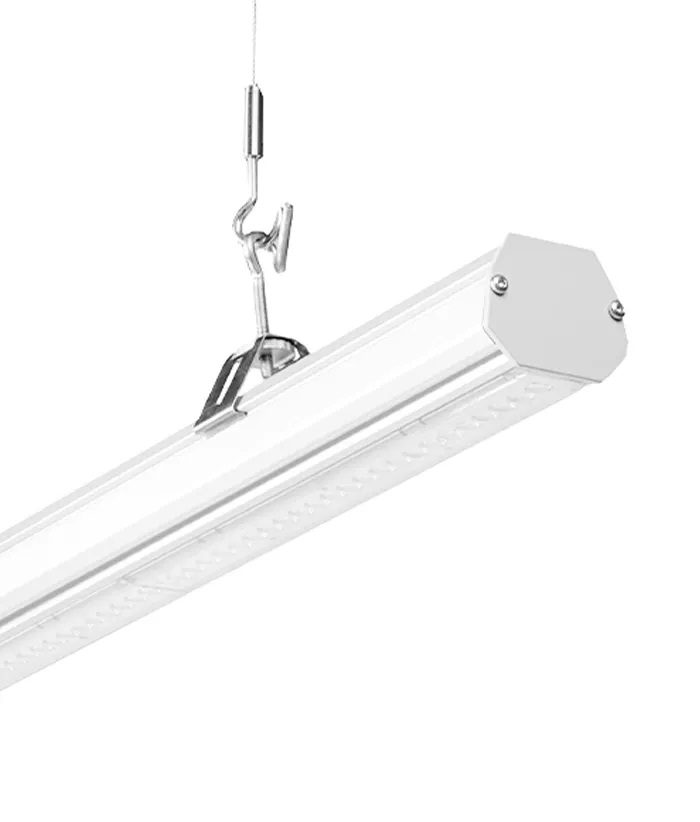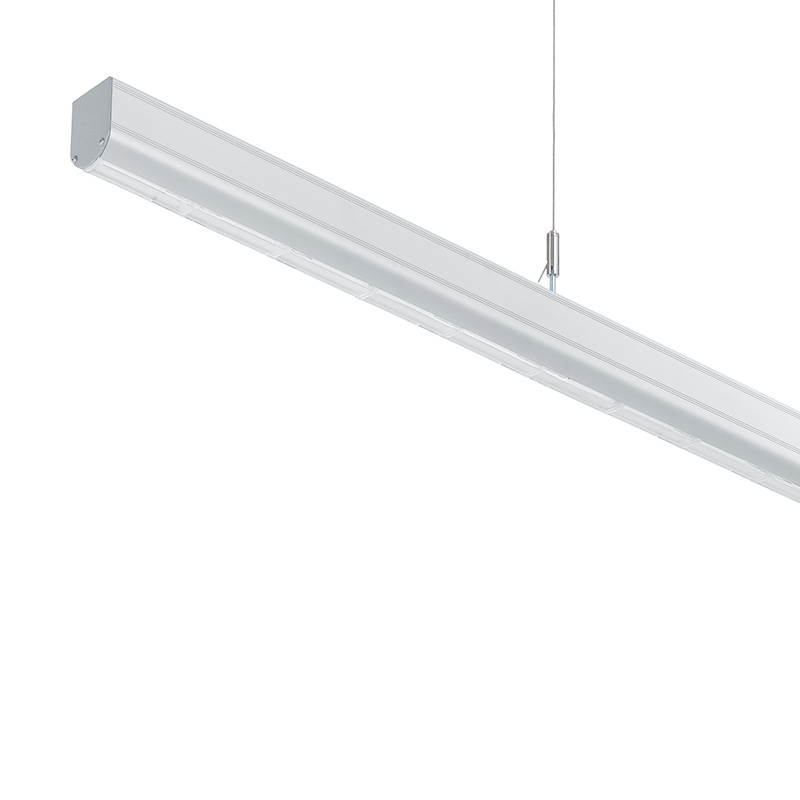The lighting of fitting rooms is one of the aspects that affect the income of fashion shops. Light sources create an atmosphere inside and influence customers’ purchasing decisions. The right LED luminaires can reduce the number of article returns.
Therefore, in this article we highlight the following:





How to choose the right lighting for a clothing shop,
the characteristics of LED luminaires in retail,
the most common choices of LED light sources for clothing shops,
what the most common mistakes in fitting room lighting are,
what kind of fitting room lighting to choose.
How to choose lighting for a clothing shop?
Every business with clothes on sale seeks to present them in the best possible light. Therefore, when designing lighting in clothing shops, it is important to provide the right atmosphere that will encourage people to enter and stay in the area, and thus also to purchase goods. There are many aspects that influence the user’s emotions. These include the product range, the smell, the tidiness of the premises and, unquestionably, the parameters of the LED lighting installed.
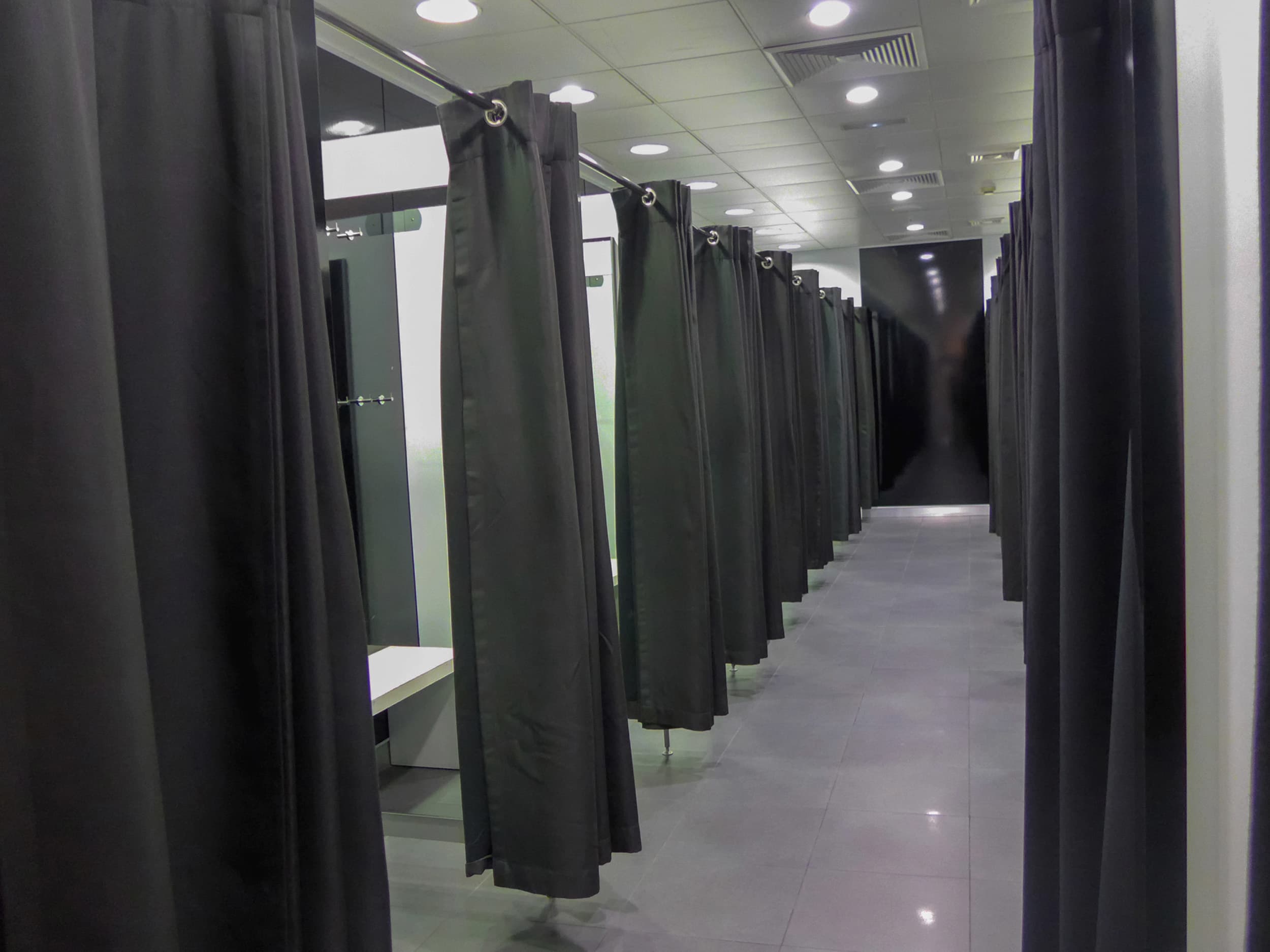
LED lighting and its characteristics in retail
Both, shops in a shopping mall and those with an entrance just off the street should have proper shop window lighting. It is important to encourage potential customers to enter the shop space. This is the first place where the retail cycle begins.
Some of the most important characteristics of lighting in a clothing shop include:
☑️ light intensity,
☑️ colour temperature,
☑️ glare factor,
☑️ uniformity,
☑️ colour rendering index.
Each of these takes on different values depending on the type of lighting used. General lighting usually provides a background to the shop’s product range on display and therefore has a lower light intensity than accent lighting. The colour of the light, which is intended to highlight specific product features, must be chosen according to the type of product being illuminated. For clothing, we use neutral or warm colours. If general lighting is provided in neutral colours, accent lighting is best provided in warm colours.
When it comes to clothing illumination, however, the most important factor is the colour rendering index, which should be >90Ra. This will ensure that the colours look as close as possible to natural daylight illumination. Each of these guidelines can be met with LED luminaires that allow thelighting to be adapted to the chosen work areas.
Types of light sources used in boutiques
The retail industry is distinguished by having numerous areas where lighting plays an important role. These include the fitting room, display area, checkout or shop window. A different lighting system with different LED luminaires is used in each one. In the warehouse area, LED downlights are used. General lighting can be implemented using linear luminaires such as Lumiline LED or Trunking LED. Tracklight luminaires can be used for accent lighting, which is used to highlight selected articles.
Lighting for fitting rooms
One of the most important areas in a clothing shop is the fitting room. This is where the purchasing decision is most often made. Unfortunately, too little attention is often paid to this lighting, and the right choice of lighting is key to the success of the business.
Checking the details of a particular product, taking photos or verifying the size are not the only things shoppers do out while trying on the clothes. For each of these, the right light is essential. LED lighting is ideal for this purpose. The possibility of adjusting the parameters to the needs of the fitting room is its greatest advantage.
What are the most common mistakes to beware of?
It is often the case that the lighting in shop fitting rooms is the wrong designed. This affects the customers’ visual perception of the range. Clothing are items that are affected by many lighting parameters. Consequently, the choice of lighting requires experienced designers who can avoid mistakes in this area.

It is often the case that the lighting in shop fitting rooms is the wrong designed. This affects the customers’ visual perception of the range. Clothing are items that are affected by many lighting parameters. Consequently, the choice of lighting requires experienced designers who can avoid mistakes in this area.
The problem most often mentioned by customers regarding lighting in fitting rooms is the poor uniformity of the light. This generates the effect of shadows forming on the body shape. If this happens, some areas of the body are less illuminated than others. This does not make the clothing in question look good. The direction of light is also important in this case. Luminaries placed just above the customer will unnecessarily accentuate any imperfections of the silhouette. Conversely, light that is too uniform can flatten the silhouette. It is also often the case that incorrectly positioned luminaires cause the light to fall not on the customer, but on the mirror.
When selling clothes, it is important to avoid glare. Glare is an absolute nuisance in fitting rooms. It reduces the customer’s comfort and does not allow a close look at the products. It is also affected by too little or too much light. It is necessary to adapt it to the fitting room area and the number and angle of the mirrors.
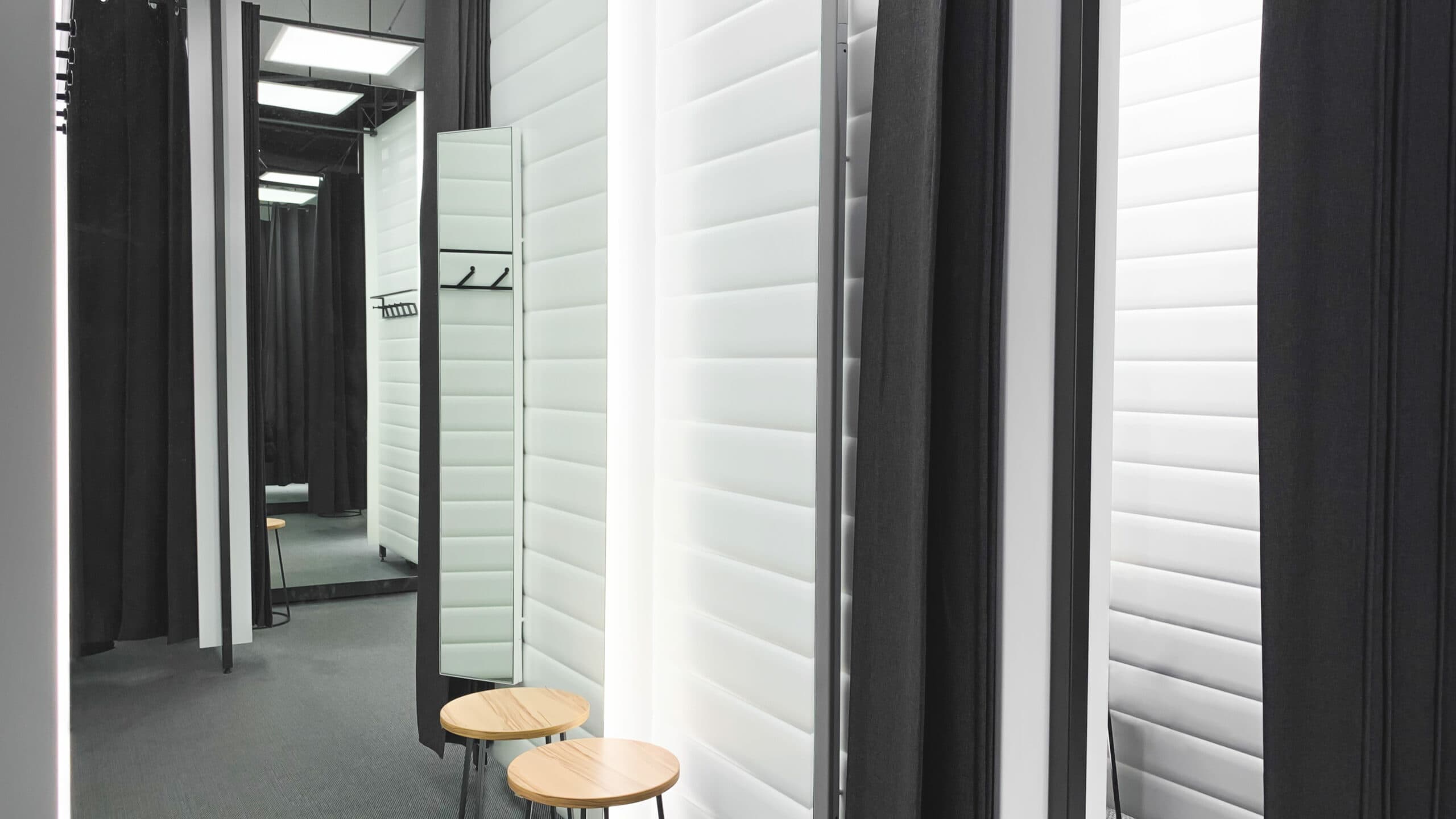
Frequent returns of clothing products can be caused by a olour rendering index (CRI) that is too low and an unadjusted light colour (CCT). The colour rendering index affects the perception of colours. If it is too low in the shop or fitting rooms, the customer may feel deceived when looking at it at home. The same applies to light colour. The reference level is sunlight.
Halogen lighting accounts for a significant percentage of the luminaires used in fitting rooms. However, note that, unlike LED luminaires, they generate a significant amount of heat. This, in turn, has the effect of reducing comfort when trying clothes.
Frequent returns of clothing products can be caused by too low colour rendering index (CRI) that is too low and an unadjusted light colour (CCT). The colour rendering index affects the perception of colours. If it is too low in the shop or fitting rooms, the customer may feel deceived when looking at it at home. The same applies to light colour. The reference level is sunlight.
Halogen lighting accounts for a significant percentage of the luminaires used in fitting rooms. However, note that, unlike LED luminaires, they generate a significant amount of heat. This, in turn, has the effect of reducing comfort when trying clothes.
The right lighting in the fitting room – step by step
Virtually every clothing shop must be equipped with electric lighting. Matching the parameters of the light sources to specific areas is extremely important.
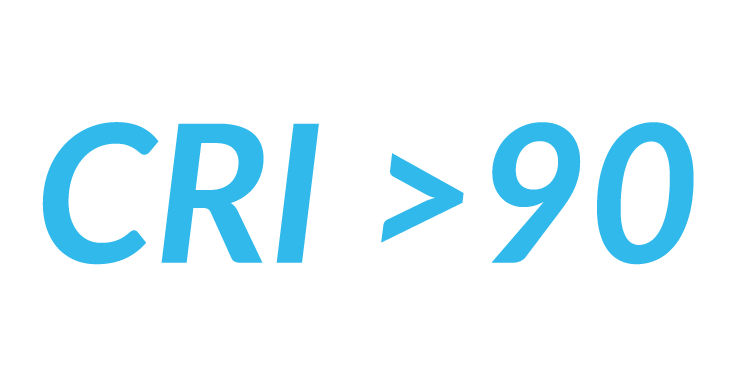


CRI
Remember that clothes look best in daylight.. With this in mind, luminaires with a colour rendering index of at least CRI90 should be selected.
Colour of light
Depending on the age of the customers, the colour of light in the fitting rooms may vary slightly. In shops offering a youthful range, it is recommended to use slightly cooler lighting. In contrast, the optimum solution is to use light with a neutral colour temperature close to 4000 K. A modern solution in this area is to install luminaires whose colour can be adjusted as required.
Glare and distribution
The light distribution in fitting rooms should be chosen according to the possibilities for luminaire positioning. If only overhead lighting can be installed then the angle of the light source should be as wide as possible. Otherwise, note that it is the customer’s silhouette that is to be illuminated, not the mirrors in the fitting room. At the same time, it is essential to reduce the glare factor. In sales areas, it should be below 19.
Other parameters such as the light spectrum and light intensity are also important. In this case, however, it is necessary to take an individual approach to fitting room lighting, which takes into account its attributes.
Designing lighting for retail involves taking many aspects into account. Email us if you would like to increase sales by replacing your lighting and have any questions. Fill in the short form and we will help you choose the right lighting for your shop.

Masz dodatkowe pytania?
Zapytaj naszego eksperta
See other articles
Nothing found.



